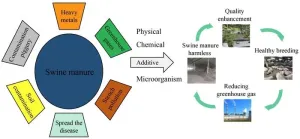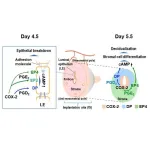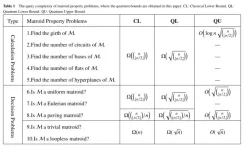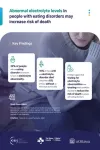Several patients who have benefited from innovative anticancer therapeutics contributed their personal stories to this year’s report, highlighting the real-world impact of medical research. The 2024 report includes a spotlight on childhood and adolescent and young adult (AYA) cancers, information about modifiable cancer risk factors such as alcohol use, and research on the economic impact of this disease. A closing call to action outlines steps Congress must take to ensure that the United States maintains its momentum against cancer for the benefit of all patients.
“As this year’s AACR Cancer Progress Report shows, the future of cancer science and medicine is very promising,” said AACR President Patricia M. LoRusso, DO, PhD (hc), FAACR. “Cancer diagnostics are becoming more sophisticated. New technologies, such as spatial transcriptomics, are helping us study tumors at a cellular level. Artificial intelligence (AI)-based approaches are beginning to transform cancer detection, diagnosis, clinical decision making, and treatment response monitoring. These advances will result in improved patient care.”
EXCITING ADVANCES IN CANCER RESEARCH AND TREATMENT
The dedicated efforts of researchers working across the continuum of cancer science and medicine have powered breakthroughs in clinical care that are improving survival and quality of life for patients in the U.S. and around the world. As outlined in the AACR Cancer Progress Report 2024:
From July 1, 2023, to June 30, 2024, FDA approved 15 new anticancer therapeutics, including: the first tumor-infiltrating lymphocyte-based cellular immunotherapeutic, which will benefit patients with melanoma; a new bispecific antibody against a novel target for patients with small cell lung cancer; and several new molecularly targeted therapeutics and immunotherapeutics for the treatment of patients with different types of blood cancer.
During this same time frame, FDA also approved: 15 previously approved anticancer therapeutics to treat additional cancer types; one new imaging agent; several AI-based tools to improve early detection and diagnosis of cancers; and two minimally invasive tests for assessing inherited cancer risk or for early detection of cancer.
Due in large part to advances in prevention, early detection, and treatment, the age-adjusted overall cancer death rate in the U.S. fell by 33% between 1991 and 2021—an estimated 4.1 million cancer deaths averted.
Interdisciplinary research is driving technological innovations like radiotheranostics, the combined imaging and precise delivery of radiopharmaceuticals to a tumor, that are poised to deliver the next set of clinical breakthroughs. PROGRESS AGAINST CHILDHOOD AND AYA CANCERS
More and better treatment options have also led to significant progress against many childhood and AYA cancers, as illustrated in the report through the personal stories of 10-year-old Michael Methner and 17-year-old Parker Shaw. Specifically:
In the 12 months covered by the AACR Cancer Progress Report 2024, FDA approved two new molecularly targeted therapeutics for childhood and AYA cancers: tovorafenib, for the treatment of children with certain types of brain tumor, and repotrectinib, for the treatment of children with a wide array of cancer types that have a specific genetic alteration known as NTRK gene fusion.
FDA also expanded the use of a different molecularly targeted therapeutic, eflornithine, as a treatment to reduce the risk of relapse in children with high-risk neuroblastoma.
The overall cancer death rate for children and adolescents has declined by 24% in the past two decades.
The five-year relative survival rate for children diagnosed with cancer in the U.S. has improved from 58% for those diagnosed in the mid-1970s to 85% for those diagnosed between 2013 and 2019.
The five-year relative survival rate for AYAs diagnosed with cancer in the U.S. between 2010 and 2018 is 86%. UNDERSTANDING ALCOHOL USE AND CANCER RISK
In the U.S., 40% of all cancers are associated with modifiable risk factors. Among these risk factors is excessive alcohol consumption. A growing body of research, summarized in the AACR Cancer Progress Report 2024, has clarified the impact of alcohol use on cancer incidence and outcomes:
Excessive levels of alcohol consumption increase the risk for six different types of cancer: certain types of head and neck cancer, esophageal squamous cell carcinoma, and breast, colorectal, liver, and stomach cancers.
In the U.S., 5.4% of cancers were attributed to alcohol consumption in 2019, the most recent year for which data are available.
Research has shown an association between the degree of alcohol consumed during pregnancy and the likelihood of the child developing leukemia after birth, with both moderate and high levels of drinking during pregnancy increasing the risk.
Alcohol intake at an early age can increase the risk of cancer later in life. Unfortunately, awareness about the link between alcohol and cancer is still low, highlighting the need for public messaging campaigns, such as cancer-specific warning labels displayed on alcoholic beverages, along with effective clinical strategies to reduce the burden of alcohol-related cancers.
DESPITE PROGRESS, CHALLENGES REMAIN
Even with remarkable scientific progress in cancer prevention, early detection, and treatment in recent years, cancer remains a significant threat to human health and well-being. In 2024, it is estimated that more than 2 million new cases of cancer will be diagnosed in the U.S. More than 611,000 people will die from the disease. Indeed, cancer continues to present a variety of complex challenges, as discussed in the AACR Cancer Progress Report 2024:
Incidence rates for some cancers are increasing in the U.S., including vaccine-preventable cancers such as HPV-associated oral cancers and, in young adults, cervical cancers. A recent analysis revealed that overall cervical cancer incidence among women ages 30 to 34 years increased by 2.5% a year between 2012 and 2019. Despite clear evidence demonstrating that the HPV vaccine reduces cervical cancer incidence, vaccine uptake in the U.S. has been poor. In 2022, only 38.6% of children and adolescents ages 9 to 17 had received at least one dose of the HPV vaccine.
Early-onset cancers are also increasing, with rates of breast, colorectal, and other cancers on the rise in adults younger than 50. FINANCIAL TOXICITY PREVALENT, INCLUDING AMONG CHILDHOOD AND AYA CANCER SURVIVORS
The AACR Cancer Progress Report 2024 explains that financial toxicity—the financial hardship following a cancer diagnosis—is widespread, and the effects can last for years:
More than 40% of cancer patients can spend their entire life savings within the first two years of cancer treatment.
Among adult survivors of childhood cancers, 20.7% had problems paying their medical bills, 29.9% report being sent to debt collection for unpaid bills, 14.1% had forgone medical care, and 26.8% did not have enough money to buy nutritious meals.
Financial toxicity among AYA cancer survivors is also a concern. The lifetime costs associated with a diagnosis of cancer are substantial, reaching an average of $259,324 per person. On a global level, it is estimated that from 2020 to 2050, the cumulative economic burden of cancer will be $25.2 trillion.
CONGRESSIONAL SUPPORT IS KEY TO CONTINUED PROGRESS FOR PATIENTS
The rising personal and economic burden of cancer underscores the urgent need for innovative research that will accelerate the pace of progress against the more than 200 diseases we call cancer. The tremendous strides made against cancer over the past several decades, including the advances outlined in this report, have depended on strong federal investments in medical and public health research.
Unfortunately, after years of growing federal budgets for medical research, Congress cut NIH funding in fiscal year (FY) 2024. This outcome was a direct consequence of the Fiscal Responsibility Act, legislation that passed last year to mandate spending caps for FY2024 and FY2025 to temporarily resolve the nation’s debt ceiling issue. The budget reduction that NIH absorbed in FY2024 threatens to curtail the medical progress seen in recent years and stymie future advancements.
While the spending caps remain in place as Congress negotiates its FY2025 appropriations bills, Senate Appropriations Committee Chair Patty Murray (D-WA) and Senate Appropriations Committee Ranking Member/Vice Chair Susan Collins (R-ME), as well as Senators Tammy Baldwin (D-WI) and Shelley Moore Capito (R-WV), who serve as the Chair and Ranking Member, respectively, on the Senate Appropriations Subcommittee on Labor, Health and Human Services, Education, and Related Agencies, are working to prioritize a robust funding increase for NIH in FY2025.
As Congress continues its work on the FY2025 appropriations bills, AACR urges all leaders in the House and Senate to recognize the importance of supporting robust, sustained, and predictable funding growth for the federal medical research and health programs vital to the fight against cancer. To this end, the AACR Cancer Progress Report 2024 calls on Congress to:
Appropriate at least $51.3 billion in FY2025 for the base budget of the NIH and at least $7.934 billion for the NCI.
Provide $3.6 billion in dedicated funding for Cancer Moonshot activities through FY2026 in addition to other funding, consistent with the President’s FY2025 budget.
Appropriate at least $472.4 million in FY2025 for the CDC’s Division of Cancer Prevention to support comprehensive cancer control, central cancer registries, and screening and awareness programs for specific cancers.
Allocate $55 million in funding for the Oncology Center of Excellence at FDA in FY2025 to provide regulators with the staff and tools necessary to conduct expedited review of cancer-related medical products. “It is our hope that the 14th annual AACR Cancer Progress Report will help to increase knowledge about cancer and raise awareness about the urgency of federal support for scientific and medical research,” said AACR CEO Margaret Foti, PhD, MD (hc). “In recent years, we have witnessed extraordinary advances against cancer. To maintain this pace of progress for patients, robust and sustained funding for cancer research must remain a national and congressional priority.”
# # #
Resources
For a copy of the report, contact Kathleen Venango at kathleen.venango@aacr.org or 215-290-5408.
To register to attend the September 18 congressional briefing unveiling the report in person, please fill out this form. To register to view the event livestream, please fill out this form.
The AACR has made the following graphics available for reporters’ use in stories and on social media. Download them at the links below:
Cover of the AACR Cancer Progress Report 2024 (JPG)
FDA Approvals Between July 1, 2023, and June 30, 2024 (JPG)
Reduction in Overall Cancer Death Rate (JPG)
5-Year Relative Survival Rate for Children and Adolescents (JPG)
Progress Against Cancer in Children and Adolescents (JPG)
Modifiable Cancer Risks (JPG)
Alcohol and Cancer Risk (JPG)
What is Causing the Rise in Early-onset Cancers? (JPG)
Burden of Colorectal Cancer in the United States (JPG)
Financial Toxicity Among Adults Survivors of Childhood Cancers (JPG)
Cancer Moonshot Goal (JPG)
Video interviews with patients featured in the report, as well as b-roll, are also available. Contact Kathleen Venango at kathleen.venango@aacr.org for clips.
END






